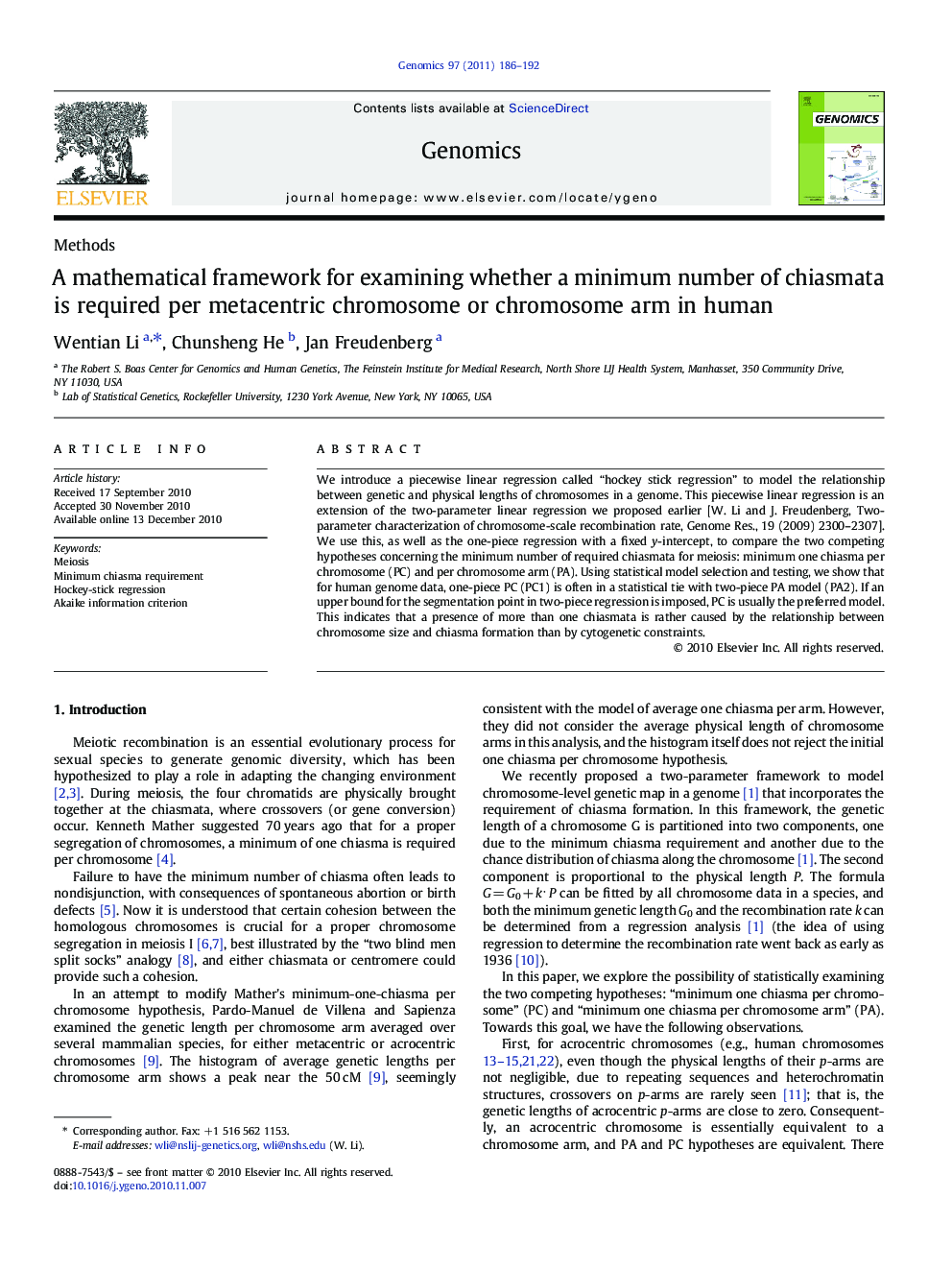| Article ID | Journal | Published Year | Pages | File Type |
|---|---|---|---|---|
| 2820892 | Genomics | 2011 | 7 Pages |
We introduce a piecewise linear regression called “hockey stick regression” to model the relationship between genetic and physical lengths of chromosomes in a genome. This piecewise linear regression is an extension of the two-parameter linear regression we proposed earlier [W. Li and J. Freudenberg, Two-parameter characterization of chromosome-scale recombination rate, Genome Res., 19 (2009) 2300–2307]. We use this, as well as the one-piece regression with a fixed y-intercept, to compare the two competing hypotheses concerning the minimum number of required chiasmata for meiosis: minimum one chiasma per chromosome (PC) and per chromosome arm (PA). Using statistical model selection and testing, we show that for human genome data, one-piece PC (PC1) is often in a statistical tie with two-piece PA model (PA2). If an upper bound for the segmentation point in two-piece regression is imposed, PC is usually the preferred model. This indicates that a presence of more than one chiasmata is rather caused by the relationship between chromosome size and chiasma formation than by cytogenetic constraints.
